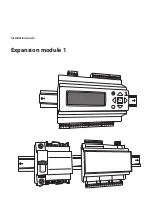
Page | 6
Mechanical Connection of VVM320
➢
Pipework Between the F2040 and VVM 320 must be sized by the installer. Minimum 32mm multilayer pipe or one-inch
copper recommended.
➢
Other Pipework To/From VVM320 must be sized by the installer and equivalent to the connections at a minimum.
➢
All High points on the heating side should incorporate venting facilities. (Flamco auto air vents recommended)
➢
Elbows should only be used when necessary,90 Degree pull bends are recommended.
➢
Pipe runs should be designed to consist of minimum bends and fittings reducing pressure/flow losses.
➢
Pipes should be installed and bracketed neatly for aesthetic purposes.
➢
The strainer valve supplied should be installed on the return pipe to the F2040 to protect the internal heat exchanger.
The direction of flow is indicated on the valve body and must be adhered to. It should be installed to allow easy re-
moval of the centre nut for cleaning purposes. This should be cleaned after the initial operation.
➢
The Tundish may release water under certain conditions and must be piped to a drain or soakaway. A resealable trap is
recommended to prevent sewer smells if applicable.
➢
A filling valve and pressure gauge is incorporated within the unit and is not required externally.
➢
A ten-litre heating expansion vessel is incorporated within the unit and should be pre-set to the required (cold fill)
pressure.
➢
An additional heating expansion vessel should be fitted if required relative to the system volume.
➢
A potable expansion vessel must be fitted on the hot pipe leaving the VVM320 (non-return valve on cold inlet)
➢
If connecting to an existing heating system, the system must be flushed and cleansed prior to interconnection.






























